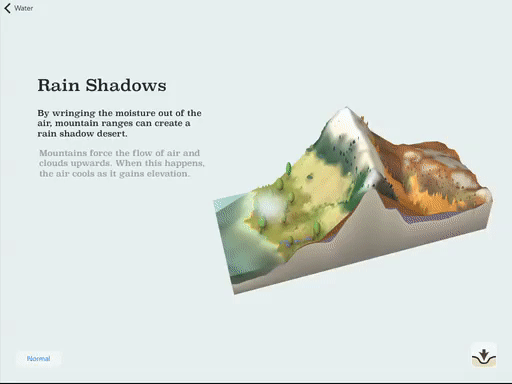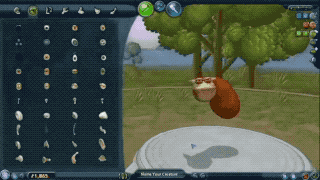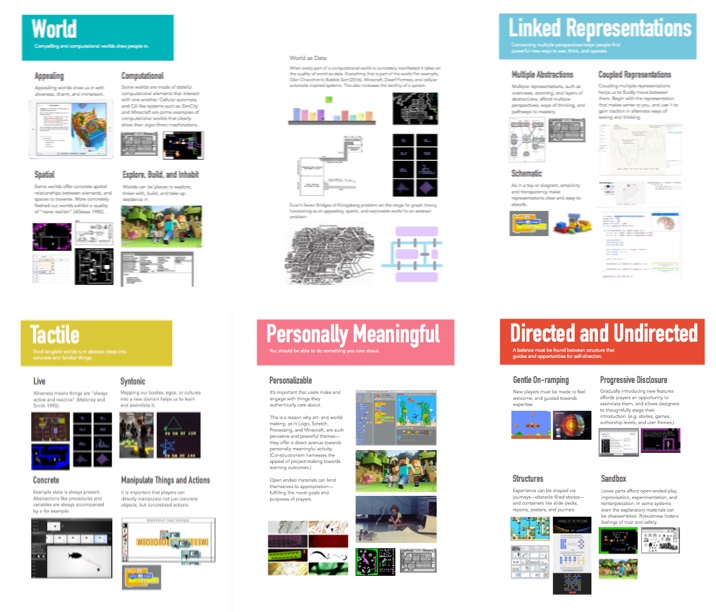Building SimCity
A book about SimCity and the history of computer simulation.

Building SimCity: How to Put the World in a Machine examines how the history of computing shaped SimCity's design and reception; the evolution of Maxis; Will Wright's career; and the genesis of The Sims. Foreward by Janet H. Murray.
MIT Press
Amazon
Barnes & Noble
Penguin Random House
“I learned more about the history and practice of simulation from this book than I ever knew. While I was usually stuck in the trees when designing SimCity, Gingold rises above to see the entire forest.”
—Will Wright, Designer of SimCity and The Sims; co-founder, Maxis
“Much more than a book about SimCity, or even about video games, its large scope includes the invention of interactive computer graphics for simulations of all kinds, including the ‘beyond reality’ universes of games. Highly recommended!”
—Alan Kay, winner of the 2003 ACM Turing Award
“Building SimCity tells the riveting and timely story of how the very unlikely idea of simulating cities became one of the most successful videogames of all times, tracing its origins back to the history of computing.”
—Yasmin B. Kafai, University of Pennsylvania
Earth: A Primer
Earth: A Primer is a geology book brought to life through the magic of simulation. I designed, programmed, produced, and funded this project, which has been featured and garnered awards widely—from CNN, WIRED, and Apple to the American School Libraries Association.
Earth: A Primer (2015) is a critically acclaimed blend of toy and science book that WIRED described as “an inspiring design experiment, and a reminder that interactive media is a young and undeveloped world itself.”
I designed, programmed, produced, and funded this award winning project. It has been featured and garnered awards widely—from CNN, WIRED, Fast Company, and Apple, to IndieCade and the American School Libraries Association.
http://www.earthprimer.com
http://www.earthprimer.com/press
iPad
Mac
La Tabla
La Tabla uses computer vision, projection mapping, and simulation to transform everyday objects into extraordinary playthings. Play together and create music, games, and animations.
La Tabla (2017) is a magical table—put things on it and they come to life. This is an experiment in making a radically embodied and open ended computerized plaything.
Make music, play pong, design and play your own pinball tables, and create animations with your body, your friends, paper, drawings, game pieces—whatever strikes your fancy. La Tabla achieves this by combining computer vision, projection mapping, and design principles that anticipate and encourage open ended play and appropriation.
www.tablaviva.org
Presentation about La Tabla. Keynote slides (300mb)
Project made in collaboration with Luke Iannini, with contributions from Paula Te, and support from Y Combinator Research / HARC. Created in the context of the Dynamicland research group.
Spore
Spore is a computer simulation game directed by Will Wright (SimCity, The Sims). I designed its suite of powerful yet fun to use 3d tools that players used to make alien creatures, buildings, and vehicles. The New York Times praised the “genius bestowed on Spore's creative facilities.”
I designed Spore's critically acclaimed creative tool suite, e.g. the Spore Creature Creator, which has been used to make over 189 million creations. The New York Times described Spore (2008) as a “scintillating, empowering toy,” and praised the “genius bestowed on Spore's creative facilities.”
In 2002, I was handpicked by Will Wright (SimCity, The Sims) for Spore's nucleic R&D team. Responsibilities also included design and prototyping across the entire project, directing interns, and interfacing with journalists.

Design Consulting
Freelance design & prototyping
After working with Will Wright on Spore I started doing some freelance design consulting.
I've consulted for clients such as Valve, Linden Lab, and Minority Media, pitching new products, providing design mentorship, and developing prototypes for experimental hardware/software platforms.
Feel free to get in touch if you have a project you think I might be interested in:
chaimg@gmail.com.

Hack
Playful learn to code environment (2019)
Hack is a laptop/OS for kids aged 8-12 that encourages them to learn about coding. Using games and narrative as a hook, kids are invited into tinkering with, modifying, and ultimately creating their own software.
I built and directed the creative team for this project, which went from concept to ship in a matter of months. This project was attractive to me for the same reasons that made it challenging: aggressive timeline, integration with an operating system, and the ambitious and worthwhile goal of creating a computing environment that encouraged kids to open up the hood and tinker—in stark opposition to how modern computing is evolving.
Hack web site
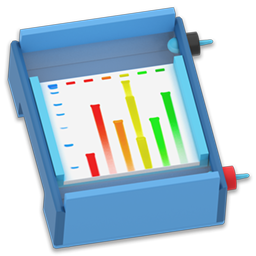
Gelbox
Biology Simulation (2018)
Gelbox is an interactive simulation of gel electrophoresis, a laboratory technique used from introductory biology courses to advanced research labs. Gelbox presents multiple linked representations that enable learners to quickly bootstrap a mental model of a complex system whose inner workings are hard to observe and thus learn.
I designed and programmed this project for, and in collaboration with, Shawn Douglas's lab at UCSF Medical School. Shawn's lab uses DNA molecules to create novel nanoscale structures. Shawn reached out to me after I released Earth: A Primer to see if I wanted to work together on a project, and Gelbox is one of the fruits of that collaboration.
More Info and Download
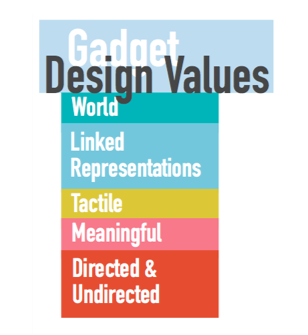
Gadget
Playful Programming (2017)
The Gadget project combines cutting edge ideas from programming languages and game design to invent new tools for novices learning to code as well as expert users. It is predicated on the observation that some of the most powerful ideas in the history of computers—from interface design to programming languages—have come from making systems more tangible, alive, playful, and accessible to children.
I did a ton of background research and design for the project, but HARC's funding was pulled before we managed to start building prototypes.
The Gadget project was part of Dan Ingalls's Lively research group at YCR/HARC.
Gadget (1) Background Survey (89mb)
Gadget (2) Design Values (24mb)
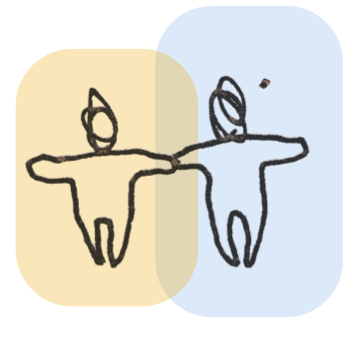
Play Design
Ph.D. dissertation (2016)
I did my Ph.D. research on play and the history of computing.
My thesis argues that it is productive to consider playthings, playmates, playgrounds, and play practices as constituting a set with shared design characteristics.
SimCity, a software plaything that confounds game-centric approaches (e.g. game studies and game design), is the keystone in an arch of case studies that takes us from some of the earliest examples of computer simulation all the way to model cities enacted with children, cardboard, and costumes, and unusual playgrounds made of junk.
Play Design
Gingold, Chaim. “Play Design.” Ph.D. thesis, University of California Santa Cruz, 2016.
Committee: Michael Mateas (advisor), Nancy Chen, Henry Lowood, Janet Murray, Noah Wardrip-Fruin.
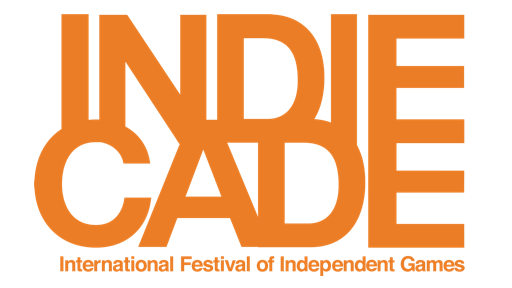
IndieCade
Conference co-chair (2013)
IndieCade is the premier festival for independent games, and has been called the “the video game industry's Sundance” (L.A. Times).
I co-chaired the IndieCade 2013 conference in Culver City with John Sharp and Brenda Romero. Together, we curated talks, invited speakers, and scheduled the conference program. Our goals were to highlight play, the history of games, and bring together a diverse set of voices.
This was a lot of work, but it was also a ton of fun—especially to see the final conference happen after many months of preparation.
http://www.indiecade.com
IndieCade's YouTube channel

Simulation for Games
Undergraduate course (2013)
I developed and taught a special topics course at U.C. Santa Cruz about simulation for games.
In this studio based course, every week students produced a one page design document and a working prototype employing the week‘s simulation topic. Final projects are prototypes of interactive explanations for Wikipedia.
The course covered a spectrum of simulation approaches prototyping and visual design communication. We went deep into the simulation topics by looking in detail at particular computer games, their design history, and source code (where possible), with a particular emphasis on SimCity. Relevant readings and game playing were assigned, and improv games were used to critique and sharpen our designs.
Course site
Syllabus
Lattice image from Burks, Arthur Walter, ed. Essays On Cellular Automata. University of Illinois Press, 1970.

Toy Chest
Game installation (2012)
Toy Chest is a tabletop game in which grown-ups (and kids) enjoy their beloved old toys in playful new ways. It is a light-hearted, improvisational contest between three or four players, each of whom brings any toy they want to the game. Compare toys by playing cards which highlight diverse toy attributes—literal and metaphorical. Whether you bring My Little Pony, Optimus Prime, or a set of jacks, you'll discover new reasons why each is wonderful.
The game uses a deck of cards, a wooden coin, and your toys. It has been exhibited at the Come Out and Play (2012) and IndieCade (2013) festivals as a full installation. The installation includes a table, stools with custom fabric cushions that match the pattern on the cards, and a giant old trunk full of toys.
Created in collaboration with Lea Redmond.
More Information
Download rules, etc... (.zip, 32mb)
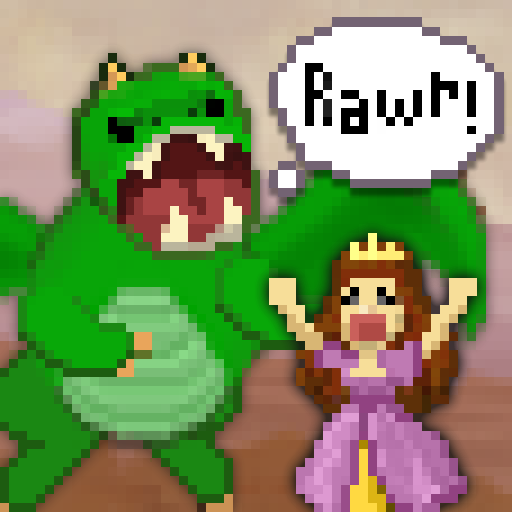
Earth Dragon
iOS Game (2009)
Do what dragons do best: destroy castles, eat people, breathe fire, battle archers and wizards, hoard treasure, and kidnap princesses. Mother Earth has sent you to punish the humans for mistreating her world. Flap, fly, burn, and smash your way through the Middle Ages.
I spent a few months developing this small iOS game project that made innovative use of the phone's accelerometer controls. Art by Jane Ng. (Unfortunately, it is no longer available for download.)
Gamasutra Interview
App home page

MinMe
iOS Game (2009)
MinMe is a simple puzzle game, in which our hero (you), must strategically collapse tiles and clear a progression of levels.
MinMe was originally made in 1.5 days for the Experimental Gameplay Project, a monthly game design challenge, where indie developers have up to one week to make a game based upon a given theme. The theme for this game was "Bare Minimum," which is reflected by the fact that the user's job is to minimize the board, it was made in a small amount of time, and has minimal graphics. Pretty minimal, eh?
App Store Link
“Gingold wastes no time in conjuring up level after level of deviously complex and awesomely rewarding puzzles that are precisely what I'd hoped for after quickly conquering the original demo.” —boingboing

The Human Play Machine
Game Developers Conference (2009)
Our games are software that runs on our players' physical, cognitive, emotional, and social hardware. But are we, as game designers, using the full range of the human animal's play capacity? What latent play faculties have the Nintendo Wii, casual games, and player authorship games (Spore, Little Big Planet) tapped into that makes them so novel, fun, and broadly appealing?
What play faculties do we traditionally engage, and what play potentials are still out there? This talk explores how existing game genres map onto the human brain and body, and how our design decisions affect who will be attracted to our games, and how they will play.
Gingold, Chaim. “The Human Play Machine” Game Developers Conference, 2009.
Keynote, Games for Health Conference (2010).

A Brief History of Spore
Book chapter (2009)
An insider history of the award winning computer game Spore; published in an MIT Press book.
This essay was written part way through Spore's development, and describes one of the biggest transitions the project made — unknown to many — from what could have been a SimEarth like game/science toy to a capital-G computer Game. It tells how Spore made some of its early, and most crucial, navigational decisions down the branches of design possibility, to use Will Wright's language.
Read online
Originally published in Harrigan, Pat, and Noah Wardrip-Fruin, eds. Third Person: Authoring and Exploring Vast Narratives. Cambridge, Mass: The MIT Press, 2009.
Character illustrations by John Cimino; SimEverything box design by Will Wright.

Catastrophic Prototyping and Other Stories
Book section (2008)
As essay on prototyping I wrote for one of the most popular game design textbooks.
This essay was originally published in Tracy Fullerton's Game Design Workshop (2008). I had given talks in the past on prototyping, but this was the first essay I wrote on the topic, and I think it holds up. Thanks, Tracy, for convincing me to write this! If you're interested in more, you might want to check out the Advanced Prototyping talk Chris Hecker and I gave at GDC 2006.
Read online
Gingold, Chaim. “Catastrophic Prototyping.” In Game Design Workshop, by Tracy Fullerton, 2nd ed. CRC Press, 2008.

Spore's Magic Crayons
Game Developers Conference (2007)

I presented a design talk on Spore at the Game Developer's Conference.
This talk was about how to design player creativity tools and toys. I draw upon many examples from Spore, and my experience designing Spore's Creators. I wrote this talk after the the Spore creative tool suite had come together—after something like four years of design and prototyping.
The talk covers a range of key ideas: mastery, constructionism, the Pinocchio effect (coming to life), design thinking, and possibility space shaping. I think the most important idea is modeling the deep structure of a domain in a way that fits the expectations and expertise of all the participants: players, artists, programmers, designers, and the computer itself. I barely touched on many of the techniques we realized, such as the deep work we did with 3d interaction design. As a result, I'd like to revisit this subject at some point, probably as a lushly illustrated long-form essay.
Download Keynote slides.
Download PowerPoint slides.
Gingold, Chaim. “Spore's Magic Crayons.” Game Developers Conference, 2007.

Advanced Prototyping
Game Developers Conference (2006)
Chris Hecker and I gave this top rated talk on advanced prototyping techniques at the 2006 Game Developers Conference. Most of our examples came from the game Spore.
By the time we gave this talk I had probably created dozens of prototypes for Will Wright and the Spore team, and had given a talk the year before on “Lightweight Prototyping” at the GDC Experimental Gameplay Workshop.
We also gave this talk as an invited keynote for the Montreal International Games Summit, and at Ubisoft. It was written up in GameSpy, Joystiq, and Gamasutra. One of our goals was to give a good two person talk, which we think we accomplished. Chris's page describes some of our lessons learned.
Chris Hecker's page on this talk.
Download PowerPoint slides.
Download MP3.
Gingold, Chaim and Chris Hecker. “Advanced Prototyping.” Game Developers Conference, 2006.
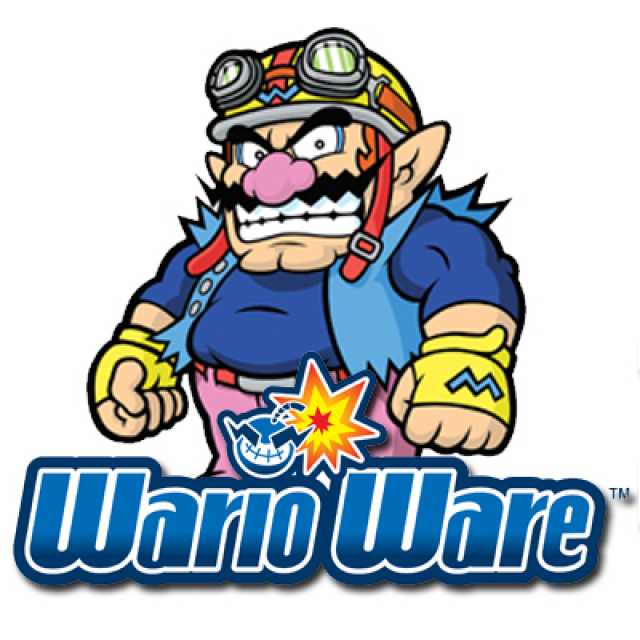
What WarioWare can teach us about Game Design
Journal of Game Studies (2005)
Review article for the Journal of Game Studies.
WarioWare pushes the boundaries of game size and complexity, the speed at which we can adapt to new games, and game fictions, to the breaking point. Through these formal experiments, WarioWare demonstrates how complexity can be achieved through combining micro games into bigger games, the range of free play between fiction and rules available to designers, and the role of continuity in games.
http://www.gamestudies.org/0501/gingold/
Gingold, Chaim. “What WarioWare Can Teach Us about Game Design.” Game Studies 5, no. 1 (2005).

Lightweight Prototyping
Game Developers Conference (2005)
Game companies' unwillingness to experiment with game design is due in large part to the rising cost of game development, which makes experimentation risky. Rapid prototyping is an excellent technique for exploring and presenting new game designs, while short-circuiting the cost, risks, and resistance to experimental game development. Each Indie Game Jam, for example, generates many cheap, focused, and compelling game design experiments.
This talk presents the basic techniques of rapid prototyping, such as iteration and learning, constrained and focused design, improvisation, and their payoffs with respect to game design experimentation. Decomposition techniques for breaking a big problem into prototypable pieces will be discussed, as well as these techniques' complementary pitfalls.
Gingold, Chaim. “Lightweight Prototyping”. Presented at the Experimental Gameplay Workshop. Game Developers Conference, 2005.

Miniature Gardens & Magic Crayons
M.S. Thesis (2003)
My masters thesis explored the aesthetics of game worlds, and described the authoring tools I built as part of my project work.
I use the key concepts of world, space, and game to emphasize the properties and possibilities of the digital medium, and link it to other genres and practices. This thesis proposes conceptual tools for thinking across genres, and is an example of how one can study game structure and aesthetics through close analysis.
I'm still surprised and delighted to meet people—well over a decade after I published this—who have read and enjoyed it. Looking back, it's fun to see how integral remixing genres is to my design practice.
Read online
Download PDF
Gingold, Chaim. “Miniature Gardens & Magic Crayons: Games, Spaces, & Worlds.” M.S. thesis, Georgia Institute of Technology, 2003.
Committee: Janet Murray (advisor), Michael Mateas, Sha Xin Wei, Will Wright.


